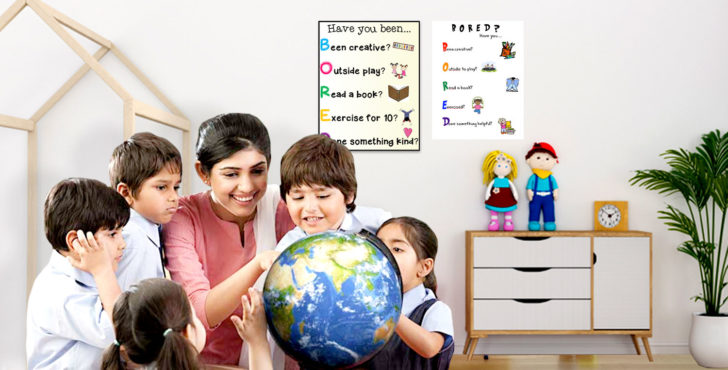Recommended Advice For Choosing Italian Kindergarten Teaching Aids
Wiki Article
What Educational And Information Materials Do Primary And Kindergarten Classrooms Do They Require?
Materials are needed in primary and kindergartens to help students learn and grow. Examples of materials you could need include: Curriculum Materials - These materials are designed to support the learning goals of your school's curriculum. Some examples of materials that may be needed include: Curriculum materials These materials are designed to support the learning goals of the curriculum at school.
Classroom supplies - Supplies like pencils, paper as well as glue, scissors, and many other art supplies are essential for children to finish their assignments and other activities.
Education technology: In this digital age, educational technology like computers, tablets and interactive boards can be used to enhance learning and offer additional resources for students.
Books - Elementary and kindergartens have to offer a variety of appropriate for children's ages that inspire reading and improve language skills.
Manipulatives - Puzzles, blocks, and other games can help develop children's spatial awareness, problem-solving, and problem-solving capabilities.
Visual aids. Visual aids like posters, charts, and maps can aid children in understanding and remember important concepts.
Arts and Music Materials- Clay, paints, and instruments are all excellent arts and music tools for children. They promote imagination and self-expression.
Safety supplies - Safety products like first aid kits and fire extinguishers are essential to ensure the health and safety of staff and students.
In general, primary and kindergarten schools require an array of educational resources and materials to ensure a secure and engaging educational environment for the students. Read the best sostegno scuola primaria for site advice.

What English teaching materials are suggested for Italian schools?
English didactic cards can be helpful in introducing young children at Italian nurseries to the English language. It is worth using the following kinds of English-language didactic cards: Alphabet Card: Alphabets can aid children in learning the English language alphabet and sounds. To make the process of learning more fun, they can include illustrations of animals or objects which begin with each alphabet letter.
Vocabulary Cards: Vocabulary cards will help kids understand the meaning of common English words. These cards feature pictures or images of animals, objects, and even people who have the English word beneath.
Sight word cards Sight word cards aid children in learning basic English words that are frequently utilized in both spoken and written language. The cards could be simple phrases or sentences, and the words highlighted.
Phonics Cards: Phonics cards can be used to help children comprehend the connection between English sounds and letters. They can feature illustrations of words or objects, with the corresponding phonetic sounds printed on the card.
Conversation cards: By participating in discussions with friends and their caregivers, children are able to learn to improve their English skills. These cards could include easy questions or prompts that inspire children to talk about their thoughts and ideas.
You must select English cards that are appropriate to the age of your child and will make them feel engaged. Teachers and caregivers are able to utilize these cards for fun, interactive English games of language that pique the children's fascination and enthusiasm. Follow the top schede didattiche inglese for blog recommendations.

What Kind Of Support Is Needed For The Science Curriculum In Italian Preschools?
Support for science-related materials in Italian nurseries could be extremely helpful to children in the early years when they are exploring and learning about the world. Here are some examples for the assistance of science-based teaching materials that might be required: Curriculum and Lesson Plans A well-designed curriculum and lesson plan that incorporates ideas from science can introduce children to a vast variety of scientific concepts and techniques.
Manipulatives (and visual aids) Manipulatives (and visual aids) such as magnifying spectacles natural specimens, basic kit for experiments in science, as well as posters and charts, can help teach children scientific concepts by using a hands-on and visual approach.
Videos and books. Books that focus on scientific subjects, such as animals, plants, weather and space, are fantastic for children to be entertained and provide more resources.
Outdoor learning spaces. Playgrounds and gardens are excellent places for children to discover more about the nature of the world.
Participation of parents in science learning can reinforce the ideas taught in the nursery classroom and encourage participation of the family in learning.
Assessment tools. Teachers and parents can utilize these tools to assess their children's progress and to determine areas in needing extra support.
The resources used in support of science education should be age-appropriate for children who are just beginning to learn. Teachers and caregivers are able to utilize these resources in order to develop engaging, interactive science activities for kids that encourage their curiosity and passion for education. Check out the recommended materiale didattico scienze sostegno for site examples.

What Geography Teaching Cards Should Be Utilized In The Italian Nursery Schools?
Geography cards are a fantastic way to introduce basic geography concepts to young children. Below are some kinds of geography cards that can be recommended. Continents: Continents cards will help children understand the continents as well as their natural characteristics.
Country cards are an excellent method of teaching children about various nations. These cards include information such as their location, flag, culture, and even their language.
Landmark cards: These cards can aid children in understanding famous landmarks and natural features from around the world, including their significance and location.
Animal Card: These cards enable youngsters to know more about the animals in the globe and their habitats. This includes their diet and behavior.
Weather cards. These cards help children learn about the weather patterns and how they impact the natural environment. They can also educate children about natural disasters.
Natural resource cards: Natural resource cards can help children learn about different types of natural resources and their use, including the use of forests, water, and minerals.
It is essential to select geography didactic cards that are suitable for children's age, entertaining and engaging for toddler children. They can be utilized by caregivers and teachers to create interactive and fun geography lessons. They will stimulate children's interest in the world and increase their interest in learning. Check out the best schede didattiche geografia for more advice.
